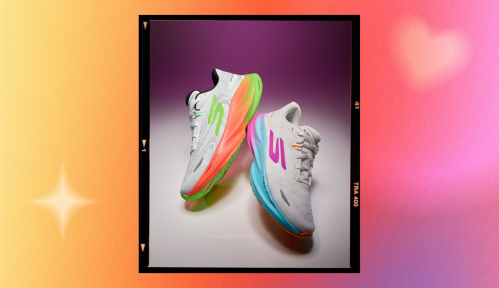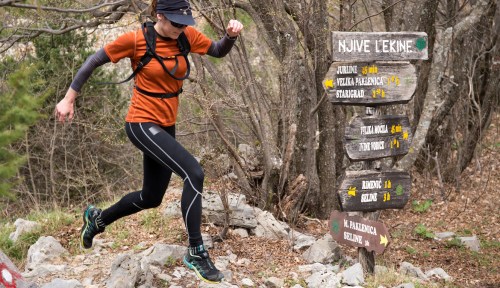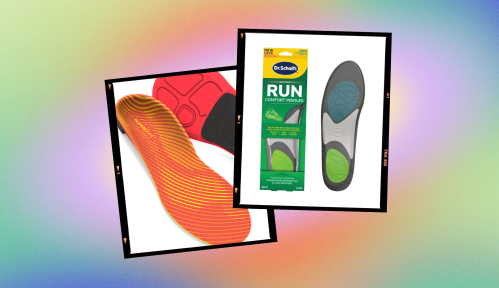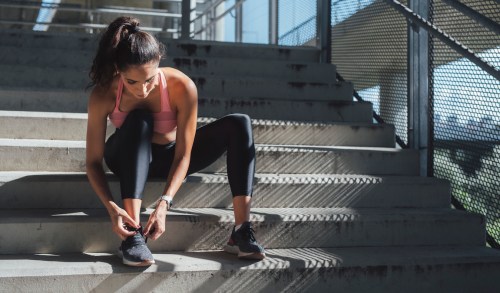Our editors independently select these products. Making a purchase through our links may earn Well+Good a commission
Podiatrists Agree: These Top 6 Hoka Shoes Stop Plantar Fasciitis-Related Heel Pain in Its Tracks
Plantar fasciitis can make running and walking painful. Explore 6 podiatrist-recommended pairs of the best Hoka shoes for plantar fasciitis
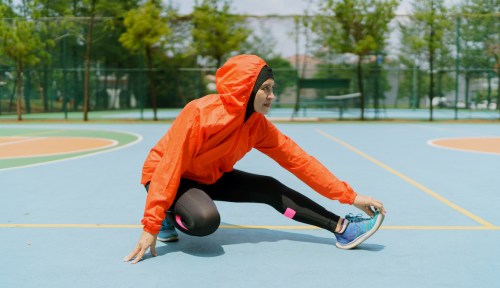
Shopping for shoes when you suffer from plantar fasciitis is no easy feat, no pun intended. That piercing, stabbing pain in the heel and swelling throughout the foot requires sneakers that won’t exacerbate symptoms even worse, particularly during activities that deliver higher impact to the foot and joints, such as running, and hiking. Instead, sneakers with a thick, cushioned midsole that absorbs shock, built-in arch support, and a “rocker” shape can help alleviate these symptoms. Luckily, Hoka—the popular footwear brand approved by the American Podiatric Medical Association (APMA)—has just the thing. Below are the best Hoka shoes for plantar fasciitis, all podiatrist-approved.
Experts in This Article
board-certified podiatrist based in Austin, TX
board-certified foot and ankle specialist at Airport Podiatry Group
award-winning celebrity podiatrist
board-certified podiatrist and founder of Step Up Footcare in New York City
The best Hoka shoes for plantar fasciitis, at a glance:
- Best for flat feet: Hoka, Arahi 7, $145
- Best for everyday wear: Hoka, Bondi 8, $165
- Best for walking: Hoka, Gaviota 5, $175
- Best for everyday runs: Hoka, Clifton 9, $145
- Best sandals: Hoka, Ora Recovery Slide 3, $60
- Best for hiking: Hoka, Anacapa Breeze Mid $170
What is plantar fasciitis, anyway?
“Plantar fasciitis, or fasciosis, involves tearing and scarring of a band of tissue in the arch of the foot,” says Nelya Lobkova, DPM, Podiatrist at Step Up Footcare in New York City. “It begins to tear at the insertion of the plantar fascia into the heel bone.” In other words… ouch. Dr. Lobkova says the symptoms of plantar fasciitis include pain in the heels (which can happen either when walking or standing after a period of rest), mild swelling, and redness. “Chronic tearing of the plantar fascia causes a build-up of abnormal or scarred fascia or tendon that can cause prolonged pain and discomfort,” she says.
What causes plantar fasciitis to occur?
“Many things can cause the ligament to become inflamed,” adds board-certified podiatrist and surgeon, David J. Liss, DPM, of Airport Podiatry Group in Los Angeles. The main culprits of plantar fasciitis are tight calf muscles, a very low or high arch, an increase or change in activities, and poor shoe choice. Liss says you should avoid shoes that “are too flat, flexible, and that lack proper support for the foot.”
What shoes do doctors recommend for plantar fasciitis?
With so many sneakers on the market, it’s important to shop from a trustworthy source. “Choose a shoe company that focuses on product development, scientific testing, and proper shoe construction,” recommends Dr. Liss.
From there, follow these tips from Anne Sharkey, DPM, a podiatrist at North Austin Foot & Ankle Institute:
- Choose shoes with shock-absorbing cushion, “which helps to alleviate pain and pressure,” she says.
- Shoes should have a firm heel counter, which is a piece in the back of the shoe that provides stability and better alignment. Look for ones with “adequate width throughout the shoe to support the arch and give enough room for toe spread,” she recommends.
- Be mindful of the heel-to-toe drop. “5mm and higher tends to be best for those with plantar fasciitis—the sweet spot seems to be a 7-10mm heel drop for acute plantar fasciitis,” she says.
What to avoid
Proper support is key to coping with and combating plantar fasciitis flare-ups. When you’re looking for the best shoes for plantar fasciitis, avoid flat-soled shoes with no arch support or cushioning—”think flimsy, cheap flip-flops and ballet flats,” Dr. Sharkey says. Additionally, Dr. Sharkey recommends eschewing flexible, casual tennis shoes with no support in favor of—you guessed it—more supportive styles, since the former, “places excess stretch and strain on the plantar fascia, which exacerbates pain.”
What are the best Hoka shoes for plantar fasciitis?
Hoka is a shoe brand dedicated to advancing good foot mechanics and health, so its styles are a great place to start shopping. This is due to a variety of factors, including their marshmallow-like cushioning, stability, and a rocker-like bottom that propels you forward during walks and runs. “Designed with extra cushioning, a wide midsole, and a low heel-to-toe drop, Hoka shoes are ideal for those suffering from plantar fasciitis,” says podiatrist Marion Yau, aka, Miss Foot Fixer.
Of course, consider the following before splurging on new pair of Hokas (or any shoes, for that matter.)
Activity
While all of the shoes on this list are podiatrist-approved for folks with plantar fasciitis, you’ll still want to consider whether the shoe is right for your desired activity. Runners in particular should take stock of the other features (cushion, drop, stability) before deciding whether it’s the right pair of Hoka shoes for their needs.
Style
Hoka does a pretty good job of offering a variety of colorways for each of its styles, but some offer more options than others. Make sure you pick a color you’ll be excited to wear on the regular.
Price
The shoes on our list all cost around $150, but some styles (like the Clifton and Arahi) are slightly more affordable than others (like the Bondi and Gaviota). Keep your budget in mind, because you may just find what you’re looking for in one of the less expensive styles.
Without further ado, below are six of the best Hoka shoes for plantar fasciitis, ready to keep your heels happy and healthy.

Best for flat feet: Hoka, Arahi 7 — $145.00
Available sizes: 5-12, in half sizes and two widths
According to Dr. Sharkey, the Hoka Arahi 7 is a must for added stability throughout the foot. “It’s my most recommended shoe for those with flat feet or overpronation,” she says. Dr. Liss concurs, saying it’s, “a great option for people who need maximal stability to prevent any excessive inward rolling of the ankle.” In addition to its stabilizing frame, the Arahi 7 is beloved for its combination of cushioning, lightweight design, and mesh upper with zones of breathability.
Weight: 8 oz
Heel-to-toe drop: 5 mm
Colors: 8
Pros:
- Extremely stable—great for overpronation
- Balanced cushioning throughout the midsole
- Great for both walking and running
- Available in two widths
Cons:
- Runs big—size down
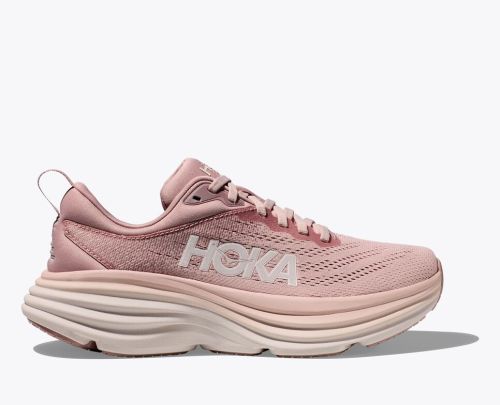
Best for everyday wear: Hoka, Bondi 8 — $165.00
Available sizes: 6-11, in half sizes and two widths
Dr. Liss says the Bondi 8 is a great choice for, “everyday wear, walkers, or runners who prefer a more cushioned, bouncy feel.” He also recommends this style for his senior patients, as it provides more cushioning.“As we age, we tend to lose some of the fat-padding on the bottom of our foot, and harder surfaces can cause pain,” he says. With a rear crash pad that offers a balanced ride from heel-strike to forefoot transition, this Hoka sneaker is an ideal option (and a more stylish alternative to some other orthopedic shoes on the market), especially for walking.
Weight: 9 oz
Heel-to-toe drop: 4 mm
Colors: 10
Pros:
- Maximum cushioning and rear crashpad
- Breathable mesh upper
- Padded ankle collar
- Wide range of sizes and colors
- Available in two widths
Cons:
- Neutral stability—might not be supportive enough for overpronation
- Drop may be a little low for some
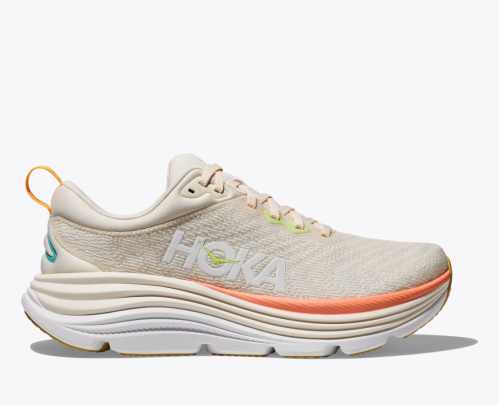
Best for walking: Hoka, Gaviota 5 — $175.00
Available sizes: 5-12, in half sizes and two widths
Dr. Lobkova loves the Gaviota because of its cushioning, particularly on hard surfaces over long distances. It features the brand’s H-Frame™-enhanced support, a plush collar and tongue, and offers premium stability—so when you’re looking for the best shoes for plantar fasciitis, this Hoka sneaker is a great one to try.
Weight: 9 oz
Heel-to-toe drop: 6 mm
Colors: 9
Pros:
- Maximum cushioning
- Extremely stable—great for overpronation
- Features meta-rocker support to help relieve stress on the feet and ankles
- Wide range of sizes
- Available in two widths
Cons:
- Not as many color options as other Hoka styles
- Pricey
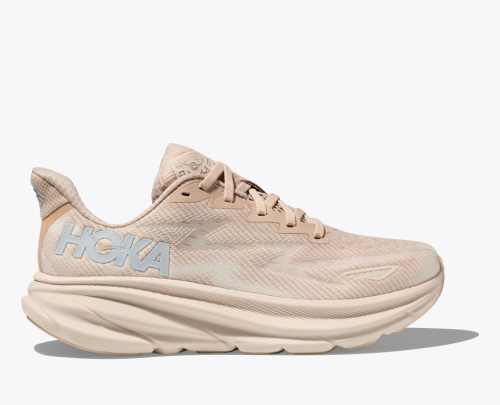
Best for everyday runs: Hoka, Clifton 9 — $145.00
Sizes: 5-12, in half sizes and two widths
One of Dr. Liss’s favorite Hoka shoes for plantar fasciitis is the Clifton 9, which he says is one of the brand’s more well-rounded and neutral options. “It’s a bit more lightweight than the others, but still quite supportive,” he says. He recommends this style specifically for younger athletes who aren’t flat-footed and don’t need as much cushion.
Weight: 7.3 oz
Heel-to-toe drop: 5 mm
Colors: 15+
Pros:
- Balanced cushioning in the midsole
- Made with recycled materials
- Lightweight, breathable design
- Available in two widths
Cons:
- Neutral stability—might not be supportive enough or overpronation
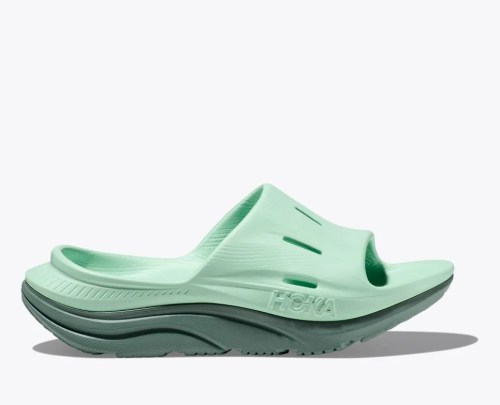
Best sandals: Hoka, Ora Recovery Slide 3 — $60.00
Available sizes: 5-16
When you have plantar fasciitis—or if you’re trying to avoid it altogether—walking barefoot, especially on hard surfaces, is a no-no. “I recommend avoidance of barefoot walking and use of recovery sandals around the house—instead of house slippers, which often offer no support,” says Dr. Sharkey. She loves the Ora Recovery Slide 3 by Hoka, which features four air-flow channels for breathability, a wide, stable base, and an earth-friendly sugarcane footbed.
Weight: 7.8 oz
Heel-to-toe drop: 6 mm
Colors: 23
Pros:
- Unisex style
- Plush, shock-absorbing midsole
- Wide stable base
- Made from eco-friendly materials
Cons:
- No half sizes or wide widths
- Limited-edition, seasonal colors sell out quickly
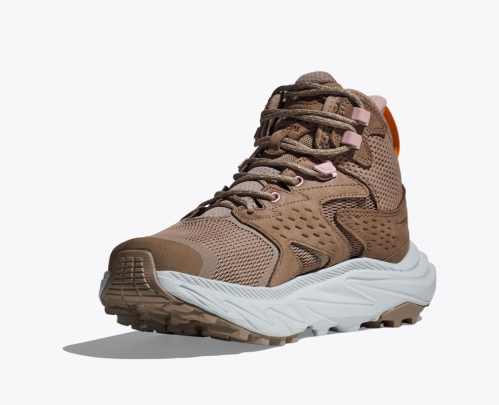
Best for hiking: Hoka, Anacapa 2 Mid — $170.00
Available sizes: 5-11
Proper footwear is crucial for hiking, but especially if you have plantar fasciitis. As podiatrist Mark Mendeszoon, DPM,previously shared with us, the Anacapa is a great pick for “anyone with foot, back, or knee issues” thanks to the rocker-style sole and generous cushioning. This hiking boot is available in a waterproof Gore-Tex model, a more breathable, lightweight model (above), and two different heights (low or mid). All styles include a Vibram outsole for maximum traction on all types of terrain.
Weight: 12 oz
Heel-to-toe drop: 6 mm
Colors: 4
Pros:
- Available in waterproof or breathable styles
- Two heights available
- Vibram sole provides generous traction for the trails
Cons:
- No wide sizes
- Limited color options
How do you treat and prevent plantar fasciitis?
Hereare a few doctor-recommended ways to treat the pain accompanied by plantar fasciitis:
Stretch it out
“The best way to relieve plantar fasciitis is to stretch, stretch, stretch,” says Dr. Lobkova, who recommends doing daily calf muscle stretches to avoid straining the muscles that attach the heel bone to the plantar fascia.
Don’t go barefoot
Although some podiatrists do recommend going barefoot or wearing barefoot sandals to allow the foot muscles to move freely and naturally, those with plantar fasciitis should wear supportive shoes. Dr. Sharkey says going barefoot can lead to plantar fasciitis pain, and says you should avoid extended periods where you’re going barefoot, especially on hard surfaces.
Use an ice roller
One way to help relieve the pain and pressure in your heel is by ice rolling. “An ice roller can be used under the foot to stretch and reduce pain and inflammation,” says Dr. Yau. Don’t have an ice roller at the ready? Don’t fret. “A bottle of water can be frozen and turned into an ice roller,” she recommends.
Support your arches
Be sure to take care of your arches, especially if you have fallen arches or high arches. “Wear shoes with cushioned arch supports and cushioned soles when walking to provide support and shock absorption,” says Dr. Yau.
No high heels
Wearing high heels can—gasp!—lead to more than just an evening of pinched toes and aching soles. If you truly want to avoid plantar fasciitis, it might be time to ditch those sky-high stilettos in favor of more comfortable flats. “Consistent use of high heels may exacerbate naturally tight calves,” says Dr. Liss.
Sign up for the Well+Good SHOP Newsletter
Get exclusive deals on wellness, beauty, fitness, and food products that have been hand-picked by our editors.
Got it, you've been added to our email list.

